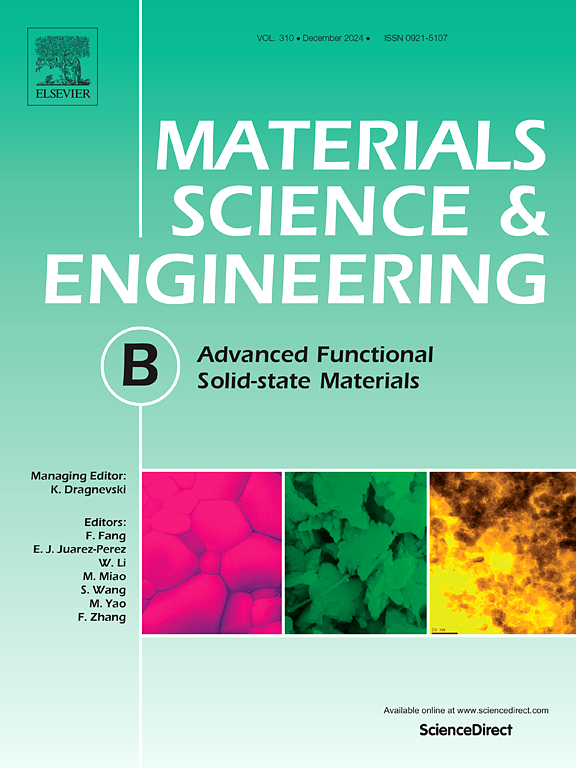Flexible 2D/0D heterojunction of bimetallic Copper molybdate and zinc sulfide quantum dots for broad-band photodetection
IF 3.9
3区 材料科学
Q2 MATERIALS SCIENCE, MULTIDISCIPLINARY
引用次数: 0
Abstract
Flexible photodetectors hold considerable promise for applications in imaging, communication, healthcare, and environmental monitoring. This study presents a broadband photodetector that combines a bimetallic Copper Molybdate (CuMoO4) thin film with Zinc Sulfide Quantum Dots (ZnS QDs) on a flexible paper substrate. The ZnS QDs, synthesized through a co-precipitation technique, capitalize on their nanoscale properties, which arise from quantum confinement effects. When integrated with the CuMoO4 thin film, these quantum dots significantly enhance the optoelectronic performance of the device. CuMoO4, with its 1.9 eV bandgap, is highly sensitive to light in the visible and infrared regions of the spectrum. The incorporation of ZnS QDs further extends the device’s sensitivity into the ultraviolet range, enabling it to detect a broad spectrum from UV to IR within a compact configuration. The device demonstrates impressive responsivity values of 109.7 mA/W (UV), 328.44 mA/W (visible), and 33.19 mA/W (IR), along with high detectivity figures of 7.1x1011 Jones (UV), 19.3 x 1011 Jones (visible), and 1.9 x 1011 Jones (IR) under respective light intensities of 2.9 mW/cm2, 0.013 mW/cm2, and 9.945 mW/cm2. The combination of ZnS QDs with CuMoO4 represents a significant breakthrough in photodetector technology, offering enhanced sensitivity, a broader spectral detection range, and the potential for integration into wearable and portable electronics.

求助全文
约1分钟内获得全文
求助全文
来源期刊

Materials Science and Engineering: B
工程技术-材料科学:综合
CiteScore
5.60
自引率
2.80%
发文量
481
审稿时长
3.5 months
期刊介绍:
The journal provides an international medium for the publication of theoretical and experimental studies and reviews related to the electronic, electrochemical, ionic, magnetic, optical, and biosensing properties of solid state materials in bulk, thin film and particulate forms. Papers dealing with synthesis, processing, characterization, structure, physical properties and computational aspects of nano-crystalline, crystalline, amorphous and glassy forms of ceramics, semiconductors, layered insertion compounds, low-dimensional compounds and systems, fast-ion conductors, polymers and dielectrics are viewed as suitable for publication. Articles focused on nano-structured aspects of these advanced solid-state materials will also be considered suitable.
 求助内容:
求助内容: 应助结果提醒方式:
应助结果提醒方式:


